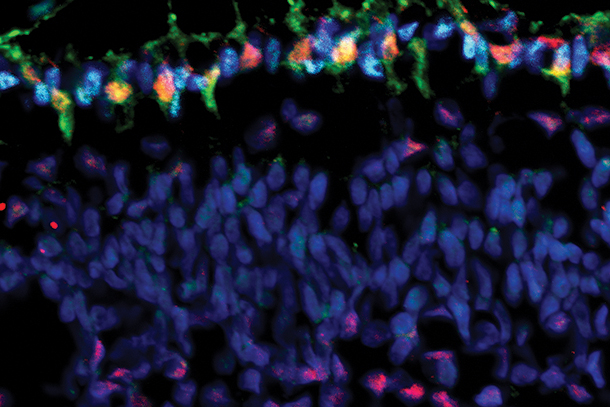Retinoblastoma is a tumor of the retina that generally affects children under 5 years of age and accounts for approximately 4 percent of childhood cancers. If not diagnosed early, retinoblastoma may result in loss of one or both eyes and can be fatal.
David Cobrinik, MD, PhD, associate professor of research ophthalmology at the Keck School of Medicine of USC and a member of the Saban Research Institute and The Vision Center at Children’s Hospital Los Angeles, has made key discoveries to advance our understanding of this cancer. His team showed that retinoblastoma arises from abnormal proliferation of a cell type called cones in the retina, the light-sensing layer behind the eye. A mutation in a tumor-suppressing gene called RB effectively releases a brake on cell growth, causing cones to grow out of control and form a tumor. Children who inherit a mutated form of RB have more than a 95 percent chance of getting retinoblastoma. Given this strong correlation, an understanding of how RB mutations affect cone cells could lead scientists toward an intervention in the disease.
Cobrinik received a $1.6 million grant from the National Cancer Institute of the NIH to study what causes cone cells to proliferate and form tumors. Though the genetic mutation is identified, we still must understand how RB mutation affects cone cells.
What makes a cell turn cancerous? Why are cone cells vulnerable to this mutation? To answer these questions, Cobrinik explained, we must understand the normal function of RB and what it is doing to block tumor formation in healthy individuals.
“If we can understand this,” Cobrinik said, “we might have the opportunity to prevent the tumor process.”
While his research is focused on retinoblastoma, understanding how tumor-suppressing genes affect healthy cells could open up avenues for treatment in many cancer types.
— Melinda Smith


